.
How do different balancing methods impact the efficiency and longevity of industrial machines?
Different balancing methods play a crucial role in ensuring the efficiency and longevity of industrial machines. The choice of method depends on the component type, operating speed, and required precision.
Static Balancing:
Used for components that operate at low speeds.
Ideal for simple, symmetrical rotors.
Less effective for high-speed or dynamically imbalanced parts.
Dynamic Balancing:
Essential for high-speed rotating components.
Reduces vibrations and extends the lifespan of bearings and machine parts.
Improves energy efficiency by eliminating unnecessary forces.
Soft Bearing vs. Hard Bearing Balancing:
Soft bearing machines are highly sensitive and ideal for laboratory environments.
Hard bearing machines are more rigid and suitable for industrial applications with heavy rotors.
Single-Plane vs. Two-Plane Balancing:
Single-plane balancing is used for short, symmetrical components.
Two-plane balancing corrects both force and couple imbalance for long rotors.
Using the right balancing method enhances machine efficiency, reduces downtime, and minimizes maintenance costs.
Related Topics:
How do I know what ATS balancing machine model (Vertical, horızontal, cradle, driveshaft, static, dynamic) Is the best for my application?
